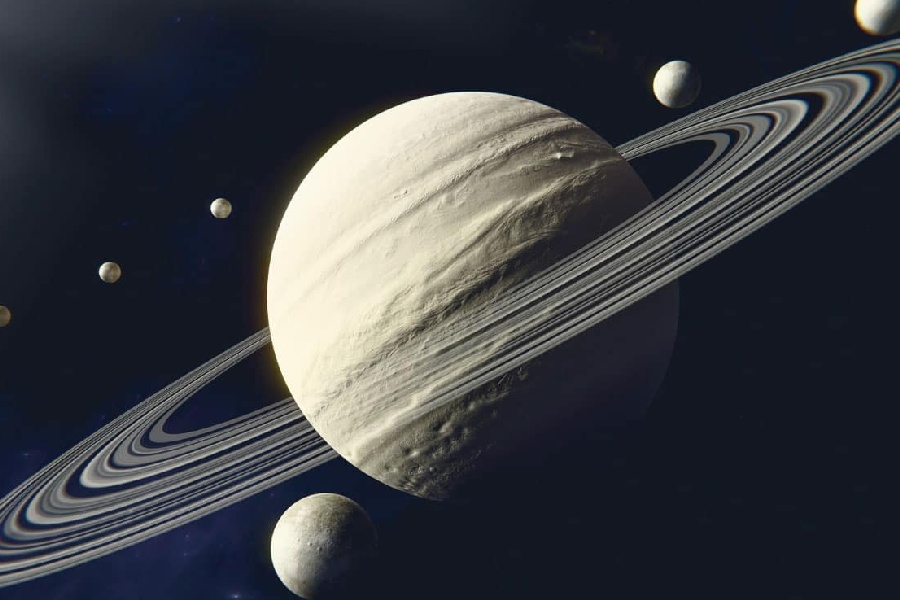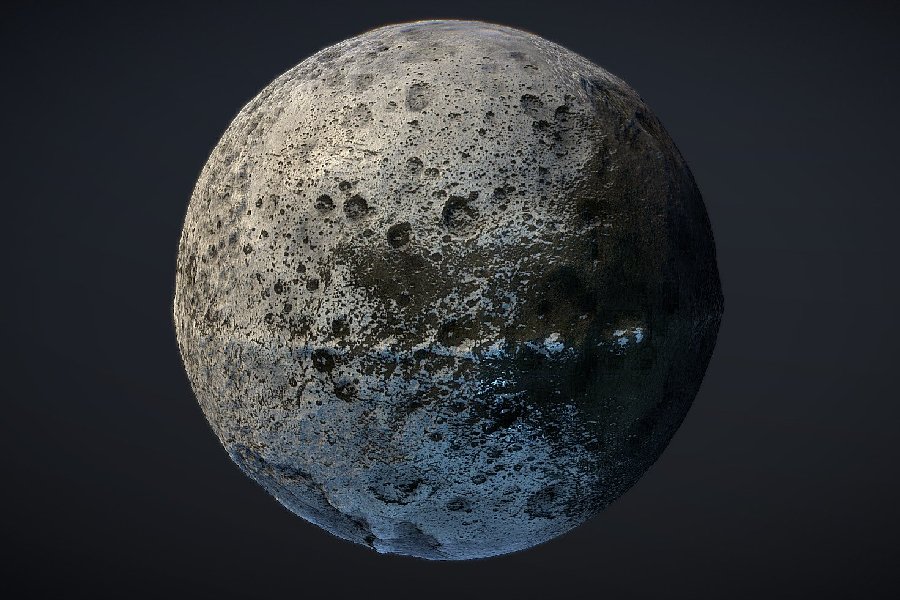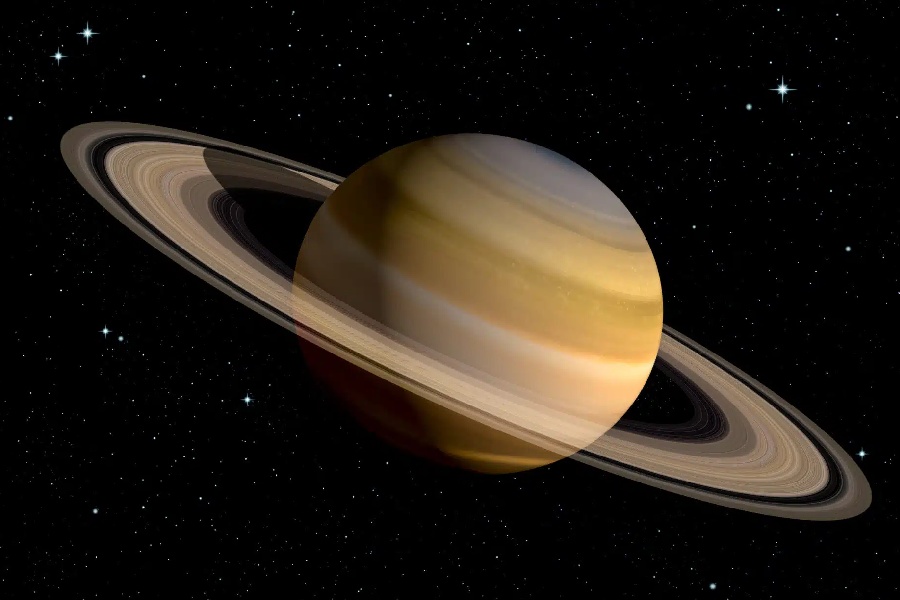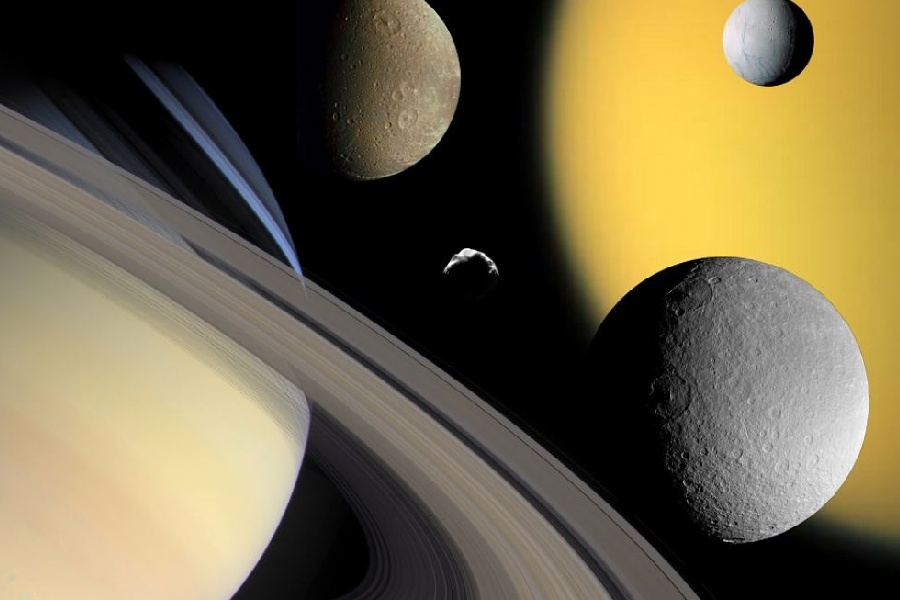Among the most sublime sights revealed by a telescope’s deep gaze are Saturn’s majestic rings. They stand unparalleled except by the elaborate symphony of moons that orbit this giant gas world. But how many moons does Saturn have?
The question remains a fundamental quest in exploring this mysterious planet. Ranging from tiny 2-mile-wide moonlets to cratered worlds nearly half the size of planets, unraveling Saturn’s full lunar entourage challenges comprehension and imagination alike.
In this article, we will explore the total number of Saturn’s moons. We will also provide a comprehensive overview of their classification and characteristics.

How Many Moons Does Saturn Have?
Does Saturn really have 82 moons? No, it doesn’t. Saturn boasts an impressive collection of 146 confirmed moons with diverse characteristics. These moons range from small moonlets to substantial bodies like Titan, surpassing even the size of Mercury.
Noteworthy moons include Titan, renowned for its nitrogen-rich Earth-like atmosphere and unique features such as river networks and hydrocarbon lakes. Enceladus is recognized for its south-polar ice jets, while Iapetus exhibits distinct black and white hemispheres, along with a notable equatorial mountain ridge.
But why does Saturn have so many moons? Saturn has many moons primarily due to its strong gravitational influence, which allows it to capture and retain numerous smaller objects in orbit around it.
Classifying Saturn’s moons: Regular vs irregular
Based primarily on orbital characteristics, Saturn’s moons are classified into regular vs irregular categories reflecting formative differences. Regular prograde moons constituting most of the first 30 discovered have nearly circular, planar orbits, suggesting origins from Saturn’s primary accretion disk.
By contrast, more eccentric, highly inclined retrograde orbits signal dozens of confirmed irregular moons. These moons were gravitationally captured by Saturn post-formation from heliocentric orbits.
Largest Moons of Saturn
Saturn has several very large moons that are like mini-planets. This group includes Titan, which is over 3,200 miles (5,150 kilometers) wide and enveloped in a thick cloud layer.
It also includes the nearly Mars-sized moon Rhea, the icy two-toned Iapetus, and five other moons exceeding 621 miles (1,000 km) across. These major moons contribute tremendous mass to Saturn’s neighborhood and exhibit profound moon-planet interactions, shaping their natures. So, what are the names of Saturn’s moons? Here are the largest ones:
Titan
Saturn’s cloud-wrapped Titan is an alien world in many respects yet eerily analogous to Earth in others. Titan has features like methane cycles, prebiotic atmospheric chemistry, large lakes, and sandy dunes. It might even have icy cryovolcanic flows.
Observing Titan offers a view of a frozen version of Earth, where distinct precursor chemicals create very similar processes and outcomes. Yet, major mysteries remain on the evolution of Titan’s atmosphere, the age of its surface, undisclosed organic deposits, and subsurface dynamics.
Hence, future mission concepts like aerial drones and nuclear-powered submarines could unveil whether a second Genesis unfolded in this environment.
Rhea
Heavily cratered Rhea contains perhaps the most saturated impact record visible anywhere. Overlapping craters blanketing its ancient crust, telling endearing tales of recurring collisions across unfathomable durations.
Yet, Rhea still highlights internal activity through fractured linear virgae streaks hinting at recent resurfacing. As simulations correctly predicted, Rhea’s orbital resonance lock and synchronous rotation with ring arcs and other moons unveil the intricate clockwork timing of its gravitational influence.
However, what drives Rhea’s ongoing activity remains for probes to discover in Saturn’s chronicle-rich lunar attic.

Iapetus
The epic two-faced split seen on Saturnian moon Iapetus constitutes one of the most dramatic and perplexing features anywhere in Earth’s backyard. Leading theories suggest darker reddish dust from the retrograde outer moon Phoebe swept across Iapetus’s path over time. This triggered ice sublimation and compounding albedo contrasts.
Nonetheless, questions swirl over this dust’s composition and journey beyond Saturn’s main rings, along with confirming Iapetus’ geologic history. Major moon migrations likely also played roles in this cosmic tale of contrasts written across the spectacular expanse of Iapetus for mysterious reasons.
Dione
Battered by craters, Dione showcases Saturn’s enormous tidal forces. These pressures have cracked and twisted the crust of this ice moon during its 4.5 billion-year lifetime, resulting in tower-faced scarps that reach heights of hundreds of miles.
Furthermore, bright icy slivers blast briefly into space from some impacts, dusting Dione’s darker terrain with exotic exospheric sleet only possible given Saturn’s proximity. However, what organic chemistry percolates in Dione’s icy bedrock remains for direct exploration to discern.
Hence, future concepts envision melt probes descending into subsurface oceans theorized by convection models. These probes would search for astrobiological potential through the lens of Enceladus’s similarly tidally-stretched sibling.
Tethys
Though tiny beside Saturn, Tethys still raised fractures hundreds of miles long under unknown past forces. These fractures at lost complexity are buried in this airless ice world that was only recently seen clearly for the first time.
Whether convulsing geologic eras or shattering impact shocks explain the cracks splitting, Tethys’ surface awaits confirmation. More definite are the precisely timed orbital resonances that Tethys and her sister Mimas share, indicating their common migration history.
Therefore, connecting orbital mechanics to surface morphologies could unveil missing chapters detailing how Saturn’s medial moons settled into present configurations.
Enceladus
A mere 310 miles (500 kilometers) wide, frozen Enceladus scarcely hints from outside the astonishing alien habitat concealed in its depths. It harbors a global subsurface ocean venting dramatic geyser-like plumes through hotspot cracks at its south pole.
This small world hides big systems. For example, a liquid water reservoir with organic chemistry undergoing rock-water chemical exchanges atop hydrothermal vents.
It constitutes perhaps the most accessible environment in the outer solar system, where heat, organics, and water coexist. This kindles astrobiological questions on emergence pathways for life around icy worlds.
But do amino acids catalyze the next steps there, too? Cutting-edge mission plans could melt down through Enceladus’ ice dome to find out.

Smaller Moons and Rings Around Saturn
Beyond the major satellites, Saturn hosts scores of smaller moonlets down to 500 meters wide, sculpted by complex gravitational resonances.
These illustrate the intricate orbital architectures shaping planetary systems. Of course, Saturn also exhibits its signature dazzling ring system. It is the most extensive and complex collection of rings in our Solar System.
Mimas
Though just 250 miles (400 km) wide, icy Mimas holds the title of hosting the solar system’s largest known impact crater relative to body size. The Herschel Crater stretches fully one-third the diameter of Mimas itself. This suggests a massive collision shock that nearly shattered the moon.
Mimas also contributes to defining the Cassini Division gap separating Saturn’s A and B rings. Its orbital resonances with neighbors like Enceladus and Tethys help reveal the moons’ shared history.
Hyperion
Hyperion, Saturn’s eighth biggest moon, compensates for its lack of features by having the most uneven form. It is a spongy hodgepodge likely representing a rigid pile of impact ejecta rubble loosely held together by self-gravity rather than a solid, cohesive body.
Captivating Orbits: Trojans, Co-orbitals, and Shepherd Moons
Trojan moons
Over a dozen Trojan moons inhabit gravitationally stable Lagrange points either ahead or behind Saturn’s larger satellites. They are trapped by competing gravitational forces into orbiting the Lagrange equilibrium areas instead.
So, their existence showcases how pronounced orbital resonances around Saturn enforce long-term harmony through sophisticated lunar choreography.
Co-orbital moons
Co-orbital moons go a step further from Trojans. They essentially share the same orbit as a larger moon, oscillating around Lagrangian points along the orbit over extended periods.
Saturn has two sets in Tethys/Telesto/Calypso and Dione/Helene/Polydeuces. Their coordinated paths illustrate orbital time sharing in action.
Shepherd moons
The Shepherd moons inhabit ring gaps or edges, using gravitational pull to actively sculpt ring structures while having their orbits confined by the ring masses.
The complex cosmic interaction between moons, rings, and host planets over eons is shown by Pan and Daphnis. They cross the material boundaries of the A Ring and Keeler Gaps.

Conclusion
As we conclude our exploration of Saturn’s many moons, their sheer diversity shows the richness of planetary forms assumed around gas giants. While we began by answering ‘How many moons does Saturn have?’, we delved far deeper into the nature of these unique worlds.
Each distinct moon gives important insights into the planetary origins and destiny, from frozen ocean planets to tormented volcanic colonies circling Saturn.
By peering across to Saturn’s attendants, we glimpse futures awaiting exoplanets. Researchers apply insights on tidal heating, cryovolcanism, and astrobiology cultivated around Saturn today to worlds being discovered light years beyond tomorrow.
